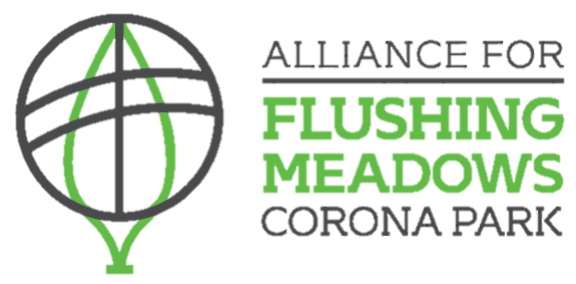The World’s Park…
Flushing Meadows Corona Park was home to both the 1939 and 1964 New York World’s Fairs. Some of the most iconic structures and art from the Fairs remain -- restored, re-purposed, or under active consideration for future renovation and re-use. Today, Flushing Meadows Corona Park is home to both the rich history of the Fair years, and the social and cultural lives of the 54 million annual visitors to the park’s current sports fields, winding paths, lakes, recreational facilities, museums, and theater. Join us as we celebrate the 50th and 75th anniversaries of the World’s Fairs and all they offered, and the future of the largest and most diverse park in the borough of Queens.
The 1939 World’s Fair
President Franklin Delano Roosevelt (1882-1945) opened the 1939-40 New York World’s Fair on April 30, 1939. Grover A. Whalen (1886-1962) served as president of the World’s Fair Corporation. The fairgrounds were divided into seven zones with exhibits in communications, government, production and distribution, food, transportation, amusement, and community interests. Highlights included the “Town of Tomorrow” with futuristic model homes, Billy Rose’s Aquacade on Meadow Lake, the Life-Savers Parachute Tower, General Motors’ “Futurama” depicting the world of 1960, and new inventions such as color film, nylon stockings, television, and air conditioning. 60 countries, the League of Nations, the Works Progress Administration, the City of New York, and 33 states and territories presented pavilions at the fair. The New York City Building was a pavilion for both fairs, the first home of the United Nations General Assembly, and currently houses the Queens Museum of Art. The 700-foot-high Trylon and 200-foot-wide Perisphere stood as symbols of the fair’s theme, “Building the World of Tomorrow.” When World War II broke out, the theme of the fair was changed to “Peace and Freedom.” 44,931,681 people attended the 1930-1940 New York World’s Fair, which closed on October 26, 1940.
The 1964 World’s Fair
The 1964-65 World’s Fair’s theme was “Peace through Understanding.” It was hosted by 80 countries, the United States government, 24 states, and the City of New York. Robert Moses served as president of the World’s Fair Corporation and opened the fair on April 22, 1964. U.S. Steel constructed its symbol, the Unisphere, which still sits in the park today. Popular exhibitions included General Motors’ “Futurama II” portraying the world of 2064, American Telephone and Telegraph’s models of the Picturephone, the large dinosaur sculptures in Sinclair Oil’s “Dinoland,” International Business Machines presentation of basic computers, the New York State Pavilion, the Hall of Science, and the intricate “Panorama” of the five boroughs in the New York City Building. Fair attendance was 51,666,300. Whether it was the introduction to the computer, the color photograph, or even the Belgian Waffle, everyone who attended has a memory of something they experienced there for the first time, and the spirit of innovation, excitement, and fun captured in what was one of the largest exhibitions ever held in the United States.











